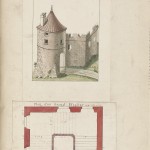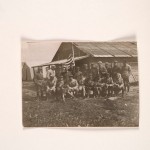
The travel journals of A.W. Quilter document his adventures in East Africa between 1909-1911, while on safari and engaging in big game hunting. These fascinating tales are now available in the Transcription Center for volunteers to read and review. While a great deal is still unknown about Quilter, for instance was he British or not, what is known from his journal was that he was a major in the military and embarked on his African safari from Nairobi, Kenya in October of 1909. What mysteries could a transcription of his journals uncover?






